Food plants: Recipes to try
New ideas can be especially handy when you have a glut!
Included are so far: beans, beetroot, berries, broad beans, kale, onion weed, silverbeet, zucchini
Beans

Cook soaked dried beans with bay leaves till
tender.
Meanwhile, caramelise onions with olive oil
in a large frying pan.
Add capsicum and continue cooking gently till
soft. Stir to prevent sticking.
Add carrot and celery and cook a few more
minutes.
Add garlic, tomatoes, chilli or harissa, wine,
vinegar and stock cube. Cook till sauce has
reduced and thickened. Drain the cooked
dried beans and add to the pan.
Add chopped beans and kale, and when
nearly cooked, add basil and pepper to taste.
Serve hot, with grated parmesan cheese and
fresh, preferably home-made, bread.
Fresh beans are one of the joys of summer.
Purple King and Lazy Housewife are two good
varieties of climbing bean.
Purple King is a great 'índicator' bean. It
changes from purple to green as it cooks, and
the moment it turns the beans are perfectly
cooked.
Lazy Housewife is a very prolific producer.
Use not only your fresh beans, but also your
tomatoes, basil and chillies, and dried beans
from last year's crop, in this tasty dish:
Beans with Beans
2 bay leaves
2 onions, thinly sliced
a good slosh of olive oil
1/2 red capsicum, thinly sliced
2 celery sticks, thinly sliced
2 carrots, thinly sliced
2 cloves garlic, crushed
2-3 large tomatoes, chopped
chilli or harissa paste to taste
1/2 cup white wine
1-2 teaspn balsamic vinegar
1 vegetable stock cube
2-3 cups chopped green (or purple!) beans
handful chopped kale (remove main vein first)
handful basil leaves, chopped
freshly ground black pepper
Beetroot is highly nutritious and wonderfully
tasty. Grow plants quickly in a compost-rich soil
and with regular watering.
Try a tasty but simple salad:
Grate 2 beetroots, mix with a teaspoon or so of
caraway seeds*, 2-3 teaspoons of lemon juice,
1 teaspoon sugar, a pinch of salt and some
chopped parsley.
Sit this in the fridge for an hour or more then
serve with a dollop of dressing made with 1/3
cup sour cream, 1 teaspoon of horseradish
cream and a teaspoon of chopped dill (or grind
some dill seed if you don't have fresh dill).
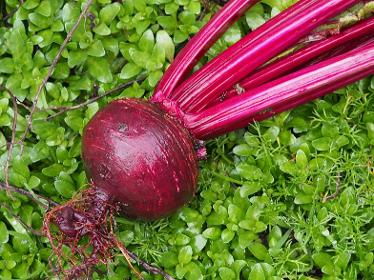
freshness. The cheapest way to get started
is with a pack of caraway seeds from the
spice section of your favourite store.
3 medium beetroot
1 onion
2-3 carrots
1 red capsicum
garlic
1 tomato
1L stock, 1 bay leaf, 5 allspice seeds
2 medium spuds, diced
1/4 cabbage, shredded (and some kale if liked)
1 tblsp each chopped coriander, dill and parsley
1 teasp sugar
pepper; extra stock
Peel and dice beets, carrot and onion. Chop
capsicum and crush garlic. Saute in olive oil
until tender. Add chopped tomato.
Heat stock with bay leaf and allspice. When
boiling add potato and cook until just tender.
Add cabbage (and kale if using) and cook a few
minutes. Remove bay leaf and allspice.
Add stock mixture to sauteed vegies, along with
herbs, sugar, pepper and extra stock as
needed.
Heat (but do not boil, so as to retain the
brightness) and serve with sour cream.
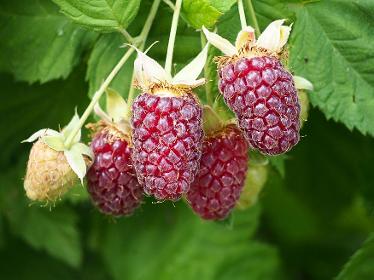
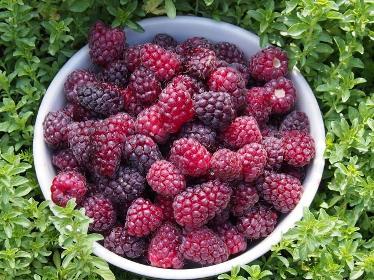
Berries
These are among the easiest fruits to grow in
the home garden.
They don't need full sun, in fact they prefer to be
out of the blast of the summer sun.
Give them some good rich soil and water, and
you will harvest enough to freeze some for later
in the year.
Try this:
250g berries
2 dessertspns brandy
1-2 dessertspns castor sugar
1 teaspn rosewater
1 teaspn orange blossom water
Blend together, sieve seeds out (or not).
Use as a topping for icecream or fruit salad, as
a dip for pieces of fruit, or to flavour a smoothie.
For a cool treat on a hot day, freeze bananas,
slice, and pour the berry sauce over. Yum!
Kale
Just one of the latest in a string of fad foods?
Well, not really. Kale has been around for
squillions of years. It's just not been a common
food plant till recently in Australia.
It's a kind of loose leafed cabbage. It is
nutritious, like all the brassicas (broccoli,
cabbage, radish, rocket, mustards etc).
And it is pretty easy to grow if you choose the
right variety for your climate.
The one shown here is Tuscan Black Kale or
Cavolo Nero. It does well in Melbourne.
Well, not really. Kale has been around for
squillions of years. It's just not been a common
food plant in Australia till recently.
It's a kind of loose leafed cabbage. It is
nutritious, like all the brassicas (broccoli,
cabbage, radish, rocket, mustards etc).
Its beautiful, crinkled, blue-green leaves make
quite a statement in the garden and it goes on
and on producing leaves month after month,
growing taller as it does.
Harvest the leaves you need as you need them
and leave the plant to grow on.
At this time of the year flower buds will appear.
You can let these mature and form seeds for
your next crops.
However, if you have other brassicas growing
they are likely to cross pollinate with your kale.
You could find yourself with kadishes, kallage,
kalcoli or kastards. You may be lucky and find
yourself with a brilliant new hybrid, but most
likely it will be best fed to the caterpillars or the
chooks.
So, you could instead pick the flower buds and
eat them. Steam them lightly, pop them into stir
fries or soups. Treat them like broccoli. They
are delicious!
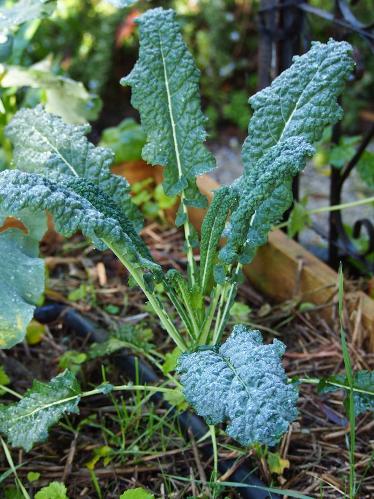
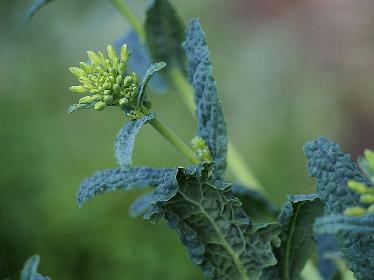
How to use kale leaves:
- in salads
- in soups and stir fries
- in quiches and frittatas
- nibble on them as you garden
- as a side dish, saute with olive oil and
Kale is rich in vitamins A, B-6, C, D and K as
well as iron, potassium, magnesium, and
calcium. It is a high fibre food.
All things in moderation! Too much kale,
Little Cauliflower Frittatas with Onion Weed
300g cauliflower grated or blitzed to crumbles
1/2 cup chopped onion weed
1-2 cloves garlic, crushed
1/2 cup chopped Warrigal greens/silverbeet
1/4 cup chopped herbs*
1/4 teaspn finely chopped chilli
freshly ground pepper
1/2 stock cube, crumbled
1 cup grated cheese
4 large eggs
Mix together and spoon into a well-greased
muffin tin.
Bake at 180C for 20-30 minutes until just firm and
lightly browned. Makes 12.
* We used parsley, rosemary and marjoram.
Also try thyme, dill and even a bit of mint.
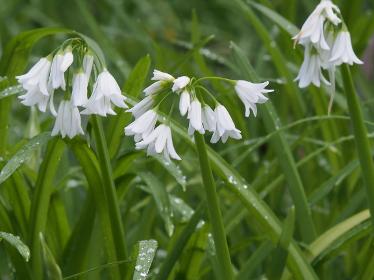
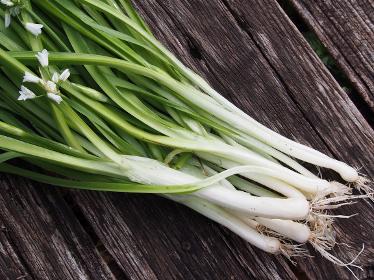
Zucchini
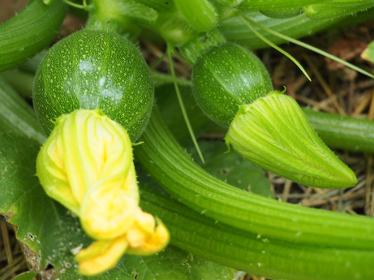
Mix all ingredients together, except the
tomatoes. Heat a couple of
tablespoons of oil in a
non-stick frying pan and pour the mix in. Press
the tomato halves into the top, cut sides up and
sprinkle with the extra cheese. Cover and cook
on a
low heat until firm. Place pan under the grill
to brown the top (wrap
aluminium foil around the
handle to protect it from the heat).
Eat hot, with salad, perhaps a beetroot one like
These round zucchinis cover less territory than
the more traditional long varieties and taste very
good.
The problem is though that once your zucchini
plants start producing you can be overwhelmed
by their abundance. Try this zucchini omelette:
400g zucchini, grated
1/2 cup or so corn kernels (fresh or canned)
1/2 cup chopped spring onion
1/2 cup chopped red capsicum
3 cloves garlic, crushed
4 eggs
1 cup grated cheese plus extra for top
1/4 cup chopped basil
1 teasp dried mixed herbs
chilli or harissa to taste
1/4 teasp salt
freshly ground black pepper
1/2 cup self raising flour
handful cherry tomatoes, halved
Best ever zucchini cake
As a special treat, try this delicious
zucchini cake:
You will need:
1+1/4 cup firmly packed brown sugar
1 cup vegetable oil
3 eggs, lightly whisked
3 cups coarsely grated zucchini
2+1/2 cups self raising flour
1 cup coarsely chopped walnuts
1 cup sultanas or coarsely chopped dates
1/2 teasp bicarb soda
1/2 teasp cinnamon
1/4 teasp nutmeg
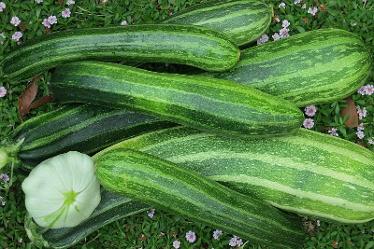
Zucchini striata is a prolific and
attractive Italian variety.
Preheat oven to 180C. Lightly grease a 22cm cake tin and line with baking paper.
Beat the sugar, oil and eggs in a large bowl until pale and creamy. Sift the flour, bicarb and spices
together.Add this with the remaining ingredients to the sugar and egg mixture. Stir to combine then
pour into cake tin and bake for 1+1/4 hours or until a skewer comes out clean. Cool in tin for thirty
minutes then turn out onto a cake rack to cool fully.
Eat as is or top with a cream cheese icing: Beat together 125g Philly cheese, 1 cup icing sugar, 1/2
teasp cinnamon, 1/4 teasp each nutmeg and vanilla. To cover sides as well as top of cake make one
and a half times this mix.
Not always regarded as a favourite, but fresh
picked, home grown broad beans really are
delicious.
Lightly saute in good olive oil or butter, with
some freshly ground black pepper or some
garlic or freshly picked leek.
At the last minute add some fresh snap peas,
and eat immediately: yum!
Add them to salads or make a dip or spread
by pureeing the beans with garlic, parmesan
cheese and a little olive oil.
If your beans have got away and grown too
large, double pod them by blanching in boiling
water for a minute then plunging into cold
water. Then slit the skin with a fingernail and
slip it off.
Save the pods with the most beans inside for
next year's seed.
Silverbeet with raisins and pine nuts
1/2 cup raisins or currants
1/4 cup brandy
6-8 large silverbeet leaves, chopped
olive oil
1 onion, sliced
garlic, crushed
1/3 cup pine nuts, toasted
zest of an orange
chili and black pepper to taste
Soak raisins in brandy.
Saute onion in oil, add garlic, silverbeet, zest,
chili and pepper. Cook, covered until leaves
are wilted and stems softened, adding a little
vegie stock if needed.
Add raisins and pine nuts and serve. This is
good with pasta or roast lamb.
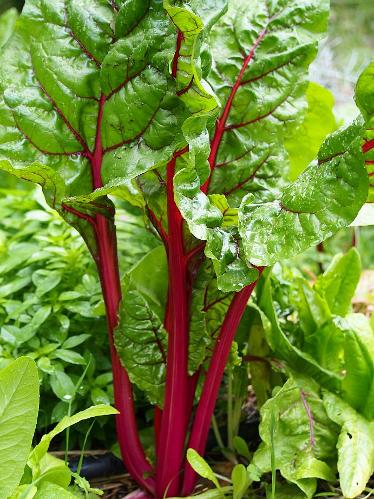
The 'silverbeet' pictured here is a fortuitous
cross between silverbeet and beetroot. It
self-sows in the garden in various shades of
red, often with a delightful beetroot flavour in
the stems.
2 cups cooked brown rice
large bunch silverbeet, blanched and chopped
1 onion, chopped
3 eggs
a slosh of olive oil
1.25 cups grated cheese
1 tblsp each chopped dill, marjoram, mint
black pepper to taste
Mix all ingredients, saving 1/2 cup of grated
cheese. Spoon into a greased pie or lasagne
dish, press down and sprinkle with reserved
cheese. Bake for 40 minutes until firm and
browned.
Serve with a tomato sauce made from 1
chopped onion, sauteed in olive oil, garlic,
800g can of tomatoes, or equivalent fresh
tomatoes, a teaspoon of honey and half a
teaspoon of harissa paste.
Winter vegetable and mushroom bake
Roughly chop 500g of mushrooms and mix with
1/4 cup of good olive oil with 2-3 crushed garlic
cloves, a tablespoon each of chopped rosemary
and thyme and a good sprinkle of freshly ground
black pepper.
Marinate for a couple of hours then spread on an
oven tray, cover with foil and bake for 30 minutes.
remove foil and bake a further 15 minutes.
Use the microwave oven to soften about 3 cups
of pumpkin chopped into 2cm cubes and sloshed
with a tablespoon or so of olive oil.
Spread on a second baking tray with a chopped
onion and bake, uncovered, until they are
browned (30 minutes or so).
Chop a bunch of kale leaves, removing the stiff
ribs first.
When the pumpkin and mushrooms are cooked,
toss them together with the kale on the baking
tray.
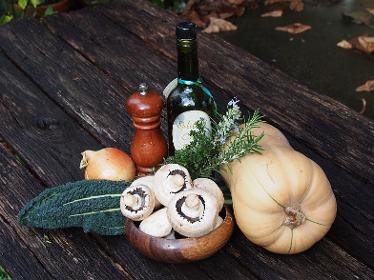
uncovered a further 15 minutes, tossing once to
ensure the kale is all wilted.
Spread 2-3 cups of bite-sized chunks of good
bread - perhaps a sour dough loaf - on another
tray and bake for 10-15 minutes until crunchy on
the outside but still soft inside.
Spoon vegetables onto plates and toss with the
bread chunks. Add a drizzle of good balsamic
vinegar and a sprinkle of coarsely ground salt.
Delicious!
leek, celery, Jerusalem artichokes...
Turn them into a delicious, warming winter soup
with barley, parsley and whatever fresh greens
you have on hand.
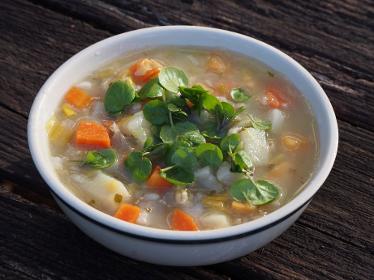
Start by simmering 3/4 cup pearl barley in a
saucepan with 2 cups of water with 1 stock cube,
2 bay leaves and the outer trimmings from the
leek, celery and fennel. Cook until tender, adding
more water if needed.
Meanwhile...
Dice one swede and in a big saucepan, saute,
covered, in butter or olive oil (or a mix -
personally we like butter for this soup).
3-4 carrots
6 or so artichoke tubers
1 large parsnip
1 turnip
1 large leek (we use the whole leek)
2 celery sticks
1 fennel
Add these to the saucepan starting with the
carrots and artichokes, then adding the parsnip,
turnip, leek and 1 teaspn freshly ground fennel
seeds after 5 minutes or so.
Saute until just tender (lid on) then add the celery,
fennel plus 1.5L water and 2-3 stock cubes.
Bring to the boil, add the cooked barley, minus
the flavouring leaves and stems.
Simmer 10-15 minutes then add chopped
fresh greens - e.g. parsley, spinach, Warrigal
greens, kale - and heat through.
Season with plenty of freshly ground white
pepper, garnish with parsley, fennel leaves or
watercress and serve with delicious bread.
This makes a big pot of soup, so you will
probably have leftovers. Add some grated cheese
and different greens for variety next day.
Enjoy!